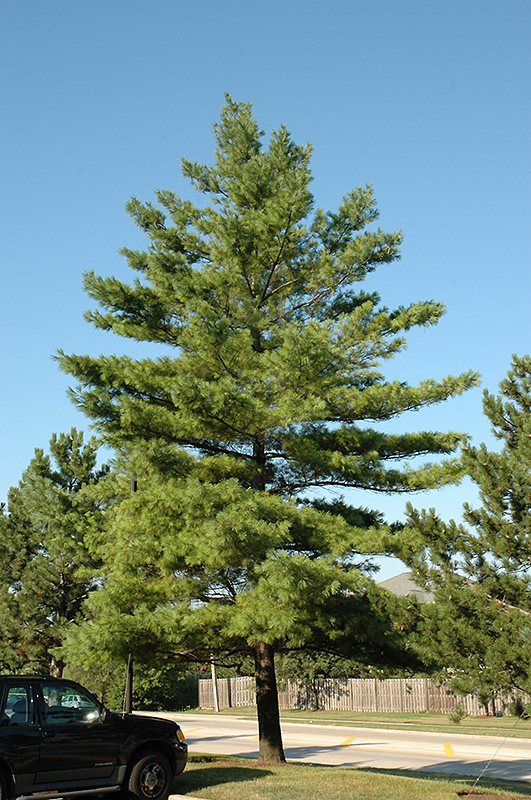Height: 60 feet
Spread: 35 feet
Sunlight:
![]()
Hardiness Zone: 3a
Other Names: Eastern White Pine
Description:
A highly attractive shade tree, features silky smooth long needles which give a fuzzy appearance from a distance, tall wide habit of growth; can windburn in exposed locations, best grown in some shelter, but needs full sun; a beautiful specimen tree
Ornamental Features
White Pine is primarily valued in the landscape for its ornamental globe-shaped form. It has rich green evergreen foliage. The needles remain green throughout the winter. The furrowed gray bark adds an interesting dimension to the landscape.
Landscape Attributes
White Pine is an evergreen tree with a strong central leader and a more or less rounded form. Its relatively fine texture sets it apart from other landscape plants with less refined foliage.
This tree will require occasional maintenance and upkeep. When pruning is necessary, it is recommended to only trim back the new growth of the current season, other than to remove any dieback. Gardeners should be aware of the following characteristic(s) that may warrant special consideration;
- Insects
- Disease
White Pine is recommended for the following landscape applications;
- Accent
- Shade
Planting & Growing
White Pine will grow to be about 60 feet tall at maturity, with a spread of 35 feet. It has a high canopy with a typical clearance of 6 feet from the ground, and should not be planted underneath power lines. As it matures, the lower branches of this tree can be strategically removed to create a high enough canopy to support unobstructed human traffic underneath. It grows at a fast rate, and under ideal conditions can be expected to live to a ripe old age of 100 years or more; think of this as a heritage tree for future generations!
This tree should only be grown in full sunlight. It is very adaptable to both dry and moist growing conditions, but will not tolerate any standing water. It is not particular as to soil type, but has a definite preference for acidic soils, and is subject to chlorosis (yellowing) of the foliage in alkaline soils. It is quite intolerant of urban pollution, therefore inner city or urban streetside plantings are best avoided, and will benefit from being planted in a relatively sheltered location. This species is native to parts of North America.
A NetPS Plant Finder tool
